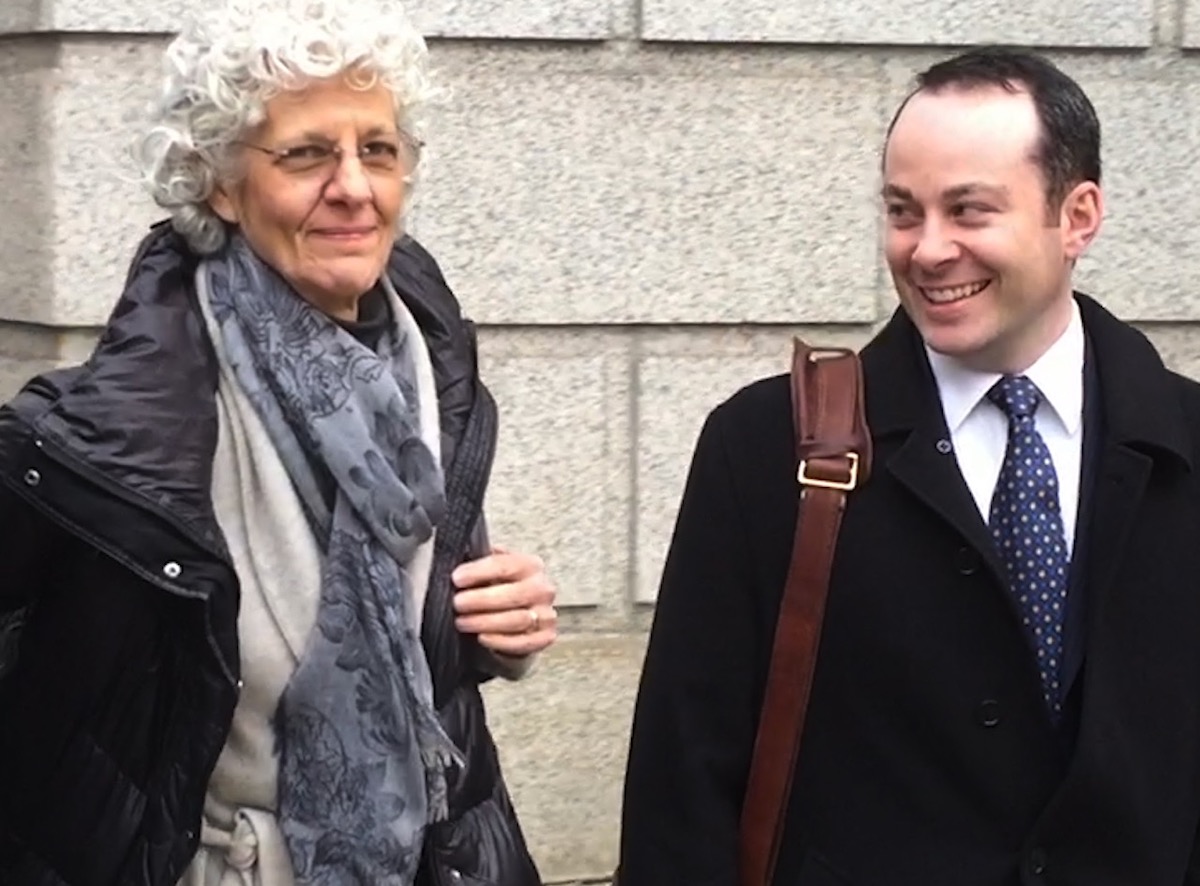$80 M. Knoedler Art Forgery Scandal Is Explored—Again, But Blandly—in New Documentary
Is there anything left to know about the scandal that roiled M. Knoedler & Co., one of the world’s oldest galleries, and brought it to an untimely end in 2011? There have been a series of lawsuits over the years regarding the New York gallery’s peddling of forged Abstract Expressionist artworks, and there have been many reports about how the $80 million scheme went down, including one in ARTnews. There was even a documentary about it this year, Barry Avrich’s Made You Look, featuring an interview in which the gallery’s former president, Ann Freedman, who attempted to justify Knoedler’s business dealings, claiming she believed the faux works by Mark Rothko, Franz Kline, Jackson Pollock, and more that she sold to be the real deal until the trial.
Now, there’s yet another documentary, this one directed by Daria Price and titled Driven to Abstraction, which was released digitally last week. Price’s focus is much the same as Avrich’s: how the art world, an arena that the film suggests prides itself upon sophistication and worldliness, could have been duped in such a way by Knoedler’s fakes. Unlike Avrich’s film, however, much of the scorn is saved for the art market writ large, which Price’s subjects allege is overly opaque and operated by byzantine conspiracies that seek to keep information about sales out of the public eye. The Knoedler scandal, Price’s film goes on to imply, is but one example of this.
“The cliché about the art market is that it’s the world’s largest unregulated market, besides guns and drugs,” M. H. Miller, who chronicled the scandal for ARTnews in 2016, says in Price’s film. “There’s truth to clichés.”
Price leans into the looming sense of doubt that hovers over the whole Knoedler scandal, which first erupted in 2011, after news of a 2009 grand jury subpoena involving the gallery was publicly reported just days after Knoedler closed for good. The legal documents unfurled a grand scandal in which Glafira Rosales, a dealer in Long Island who was virtually unknown in the international art world, had brought in a slew of faked Abstract Expressionist paintings to Knoedler, which Freedman then sold as authentic masterpieces. The paintings had a shadowy provenance, with Rosales having told Freedman that a mysterious Mr. X was parting ways with them. That alone should have raised suspicion, but Freedman appears to have been committed to selling them.
“What was going on in Ann Freedman’s head?” asks Michael Shnayerson, a contributing editor to Vanity Fair, referring to Freedman. “Did she think, deep down, that those paintings were real, or did she not?”

Ann Freedman with her lawyer Luke Nikas.
Courtesy Grasshopper Films
Price leaves those questions open—which becomes a problem as the film goes on. Driven to Abstraction is marred by various poor directorial choices that ultimately make for a frustrating viewing experience, including awkward zooms and canned noirish music repeated throughout. There is also a lack of interviews with the people who matter most. Unlike Avrich’s documentary, Price’s doesn’t include an interview with Freedman, which means the disgraced dealer never gets to properly speak for herself, and most of Price’s interviews are with journalists who covered the Knoedler scandal. These become repetitive over time, and aren’t sufficient substitutes for some of the conversations Avrich had with people more directly connected to the scandal. Such a thorough recounting of the events from secondary figures proves deadly, making for a viewing experience that is ultimately too dense for viewers who don’t already know the intricacies of what happened.
Where Price does manage to add something new to the plethora of Knoedler material out there, however, is her in-depth look at the fakes themselves. She’s made the wise decision of speaking with friends of the artist who made them, Pei-Shen Qian, who may not even have known that he was creating fakes that were selling for millions of dollars. The fakes, which Qian produced in his modest home in Queens, weren’t foolproof—experts recognized that some of the paints used to create the faux Pollocks didn’t exist when the Abstract Expressionist was active. Even Qian’s friends, who studied with him at the Art Students League (ironically the same New York art school that bred some of the Abstract Expressionists), could tell the paintings weren’t the real deal.
All of this raises a valuable question: If everyone else knew the paintings were fakes, why didn’t collectors, dealers, and a host of other individuals involved with Knoedler? The gallery’s eminence may have done a lot to enable people to look past their more suspicious aspects. Knoedler had been around for 165 years by the time it closed, and it had accrued a reputation for peddling top-tier artworks. So when collectors Domenico and Eleanore De Sole bought what turned out to be a fake Rothko from Freedman, it’s almost understandable that they would’ve been fooled—the gallery’s brand identity was strong, and they may have been seduced by it. Only after the sale did they realized they’d been fooled into buying a fake, which caused them to file lawsuits against Freedman and Knoedler.
Ultimately, the De Soles settled both suits, as did other collectors who claimed to have bought fake artworks. But the damage had been done. One of the U.S.’s top galleries had shuttered, and along with it disappeared a key node in New York’s art ecosystem. “Everybody came out of this looking pretty bad,” Miller says in Price’s film. “It was embarrassing.”
Driven to Abstraction is available for rental on Grasshopper Films’s website.
Published at Mon, 31 Aug 2020 17:52:39 +0000


